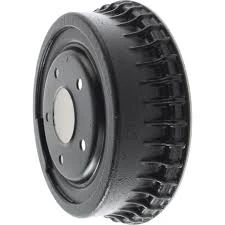
-
 Afrikaans
Afrikaans -
 Albanian
Albanian -
 Amharic
Amharic -
 Arabic
Arabic -
 Armenian
Armenian -
 Azerbaijani
Azerbaijani -
 Basque
Basque -
 Belarusian
Belarusian -
 Bengali
Bengali -
 Bosnian
Bosnian -
 Bulgarian
Bulgarian -
 Catalan
Catalan -
 Cebuano
Cebuano -
 Corsican
Corsican -
 Croatian
Croatian -
 Czech
Czech -
 Danish
Danish -
 Dutch
Dutch -
 Pelekania
Pelekania -
 Esperanto
Esperanto -
 Estonian
Estonian -
 Finnish
Finnish -
 French
French -
 Frisian
Frisian -
 Galician
Galician -
 Georgian
Georgian -
 German
German -
 Greek
Greek -
 Gujarati
Gujarati -
 Haitian Creole
Haitian Creole -
 hausa
hausa -
 hawaiian
hawaiian -
 Hebrew
Hebrew -
 Hindi
Hindi -
 Miao
Miao -
 Hungarian
Hungarian -
 Icelandic
Icelandic -
 igbo
igbo -
 Indonesian
Indonesian -
 irish
irish -
 Italian
Italian -
 Japanese
Japanese -
 Javanese
Javanese -
 Kannada
Kannada -
 kazakh
kazakh -
 Khmer
Khmer -
 Rwandese
Rwandese -
 Korean
Korean -
 Kurdish
Kurdish -
 Kyrgyz
Kyrgyz -
 Lao
Lao -
 Latin
Latin -
 Latvian
Latvian -
 Lithuanian
Lithuanian -
 Luxembourgish
Luxembourgish -
 Macedonian
Macedonian -
 Malgashi
Malgashi -
 Malay
Malay -
 Malayalam
Malayalam -
 Maltese
Maltese -
 Maori
Maori -
 Marathi
Marathi -
 Mongolian
Mongolian -
 Myanmar
Myanmar -
 Nepali
Nepali -
 Norwegian
Norwegian -
 Norwegian
Norwegian -
 Occitan
Occitan -
 Pashto
Pashto -
 Persian
Persian -
 Polish
Polish -
 Portuguese
Portuguese -
 Punjabi
Punjabi -
 Romanian
Romanian -
 Russian
Russian -
 Samoan
Samoan -
 Scottish Gaelic
Scottish Gaelic -
 Serbian
Serbian -
 Sesotho
Sesotho -
 Shona
Shona -
 Sindhi
Sindhi -
 Sinhala
Sinhala -
 Slovak
Slovak -
 Slovenian
Slovenian -
 Somali
Somali -
 Spanish
Spanish -
 Sundanese
Sundanese -
 Swahili
Swahili -
 Swedish
Swedish -
 Tagalog
Tagalog -
 Tajik
Tajik -
 Tamil
Tamil -
 Tatar
Tatar -
 Telugu
Telugu -
 Thai
Thai -
 Turkish
Turkish -
 Turkmen
Turkmen -
 Ukrainian
Ukrainian -
 Urdu
Urdu -
 Uighur
Uighur -
 Uzbek
Uzbek -
 Vietnamese
Vietnamese -
 Welsh
Welsh -
 Bantu
Bantu -
 Yiddish
Yiddish -
 Yoruba
Yoruba -
 Zulu
Zulu
Jan . 22, 2025 02:00
Hoʻi i ka papa inoa
diagram drum brake assembly
A drum brake assembly is an intricate component widely used in the automotive industry for slowing down or stopping vehicles. Understanding its layout is crucial for enthusiasts, mechanics, and anyone keen on vehicle maintenance. Through years of hands-on experience, I aim to demystify its assembly, providing insights from both an experiential and professional standpoint, while emphasizing the authority and trustworthiness of this knowledge.
An often-underestimated part within the assembly is the adjuster mechanism. As brake shoes wear down from consistent use, the adjuster compensates for this material loss, ensuring the shoes remain proximal to the drum. This self-adjusting feature optimizes braking efficiency and reduces the need for frequent manual adjustments. In terms of expertise, understanding the nuances of each component's function is integral for effective maintenance. Regular checks on brake shoe thickness, wheel cylinder performance, and the condition of springs and adjusters are essential practices. Such diligence mitigates potential brake failures and enhances the overall safety of the vehicle. Professionally, drum brakes are preferred for their cost-effectiveness and durability, particularly in rear braking systems of vehicles where the load is comparatively less than on the front. They are less prone to heat-induced fade, a phenomenon encountered in disc brakes after prolonged usage, making them a dependable choice for various applications. Trust in the reliability of drum brake assemblies has been fortified through decades of consistent performance and adaptation. However, like any mechanical component, its efficacy is contingent upon proper maintenance and timely repairs. In the ever-evolving realm of vehicle components, the drum brake assembly stands as a testament to enduring engineering excellence. By leveraging authentic expertise and fostering a lifelong dedication to understanding its mechanics, one not only appreciates its historical significance but also its continued applicability in modern vehicles.


An often-underestimated part within the assembly is the adjuster mechanism. As brake shoes wear down from consistent use, the adjuster compensates for this material loss, ensuring the shoes remain proximal to the drum. This self-adjusting feature optimizes braking efficiency and reduces the need for frequent manual adjustments. In terms of expertise, understanding the nuances of each component's function is integral for effective maintenance. Regular checks on brake shoe thickness, wheel cylinder performance, and the condition of springs and adjusters are essential practices. Such diligence mitigates potential brake failures and enhances the overall safety of the vehicle. Professionally, drum brakes are preferred for their cost-effectiveness and durability, particularly in rear braking systems of vehicles where the load is comparatively less than on the front. They are less prone to heat-induced fade, a phenomenon encountered in disc brakes after prolonged usage, making them a dependable choice for various applications. Trust in the reliability of drum brake assemblies has been fortified through decades of consistent performance and adaptation. However, like any mechanical component, its efficacy is contingent upon proper maintenance and timely repairs. In the ever-evolving realm of vehicle components, the drum brake assembly stands as a testament to enduring engineering excellence. By leveraging authentic expertise and fostering a lifelong dedication to understanding its mechanics, one not only appreciates its historical significance but also its continued applicability in modern vehicles.
Aʻe:
Nā nūhou hou loa
-
Rear Drum Brakes Maintenance TipsNūhouAug.04,2025
-
Key Components Affecting Brake Drum FunctionNūhouAug.04,2025
-
Important Inspection for Truck Drum BrakeNūhouAug.04,2025
-
How to Prepare for Changing Rear Drum BrakesNūhouAug.04,2025
-
Essential Tools for Cleaning Drum Brakes ProperlyNūhouAug.04,2025
-
Brake Drum Function GuideNūhouAug.04,2025
-
Safety Features of Red Brake DrumsNūhouAug.01,2025
